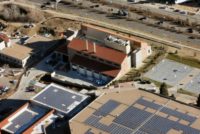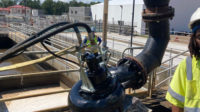New York City’s adoption of new green building codes are expected to result in reducing greenhouse gas emissions by 5% and saving $400 million by 2030, says a recently released report from the Urban Green Council, the U.S. Green Building Council’s New York chapter. The codes are also expected to divert 100,000 tons of asphalt from landfills each year; reduce greenhouse gas emissions citywide by 5%; and lower the costs of lighting energy by 10%.
The city has so far enacted 29 of 111 recommendations made by a task force established two years ago to detail steps the city should take to increase sustainability in the buildings sector. Eight more recommendations are in the process of becoming codified, the city says. The new codes will help put the city on track to meet its PlaNYC program goals, says Mayor Michael Bloomberg, who launched the green initiative in 2007.
Buildings account for 75% of the city’s total greenhouse gas emissions and 95% of total electrical consumption, the city says. The task force’s proposals address issues including carbon emission rates, public health and safety, and costs associated with wasted energy and other resources.
Under PlaNYC, the city has planted 500,000 trees, constructed new parks, and reduced greenhouse gas emissions since 2007. Projects under the plan include a 13-acre park stretching from Beach 11th Street to Beach 17th Street and Beach 28th Street to Beach 32nd Street in Far Rockaway, Queens and the $150-million, 62-acre Willets Point redevelopment project, also in Queens.






